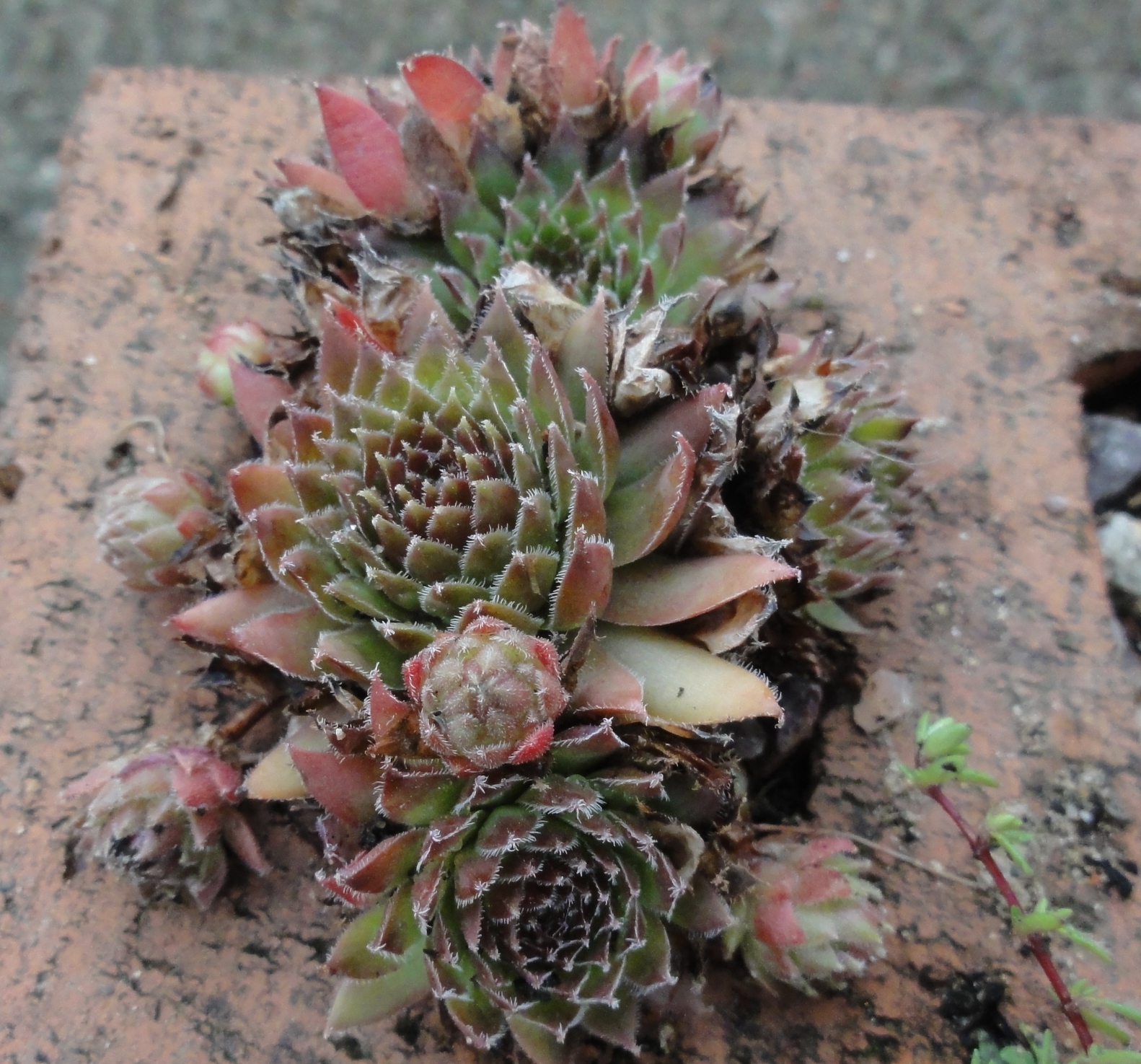Calling it an Alpine Wall may make it sound grander than it is, however, it is alpines and they are growing in a wall. Or, the remainders of a wall, viz:
This wall separates our driveway from our neighbours Yvonne and Gary. Getting rid of it or trying to fix it would be costly, and frankly we have other work around the house and garden that is more important to spend money on. And to be honest, I very quickly went from 'well this isn't very attractive' to 'hey, this is an opportunity...'
For years I have loved alpines, but hadn't got around to doing anything about it. So as I mentioned, last year I thought I'd make the most of a bad wall and plant some alpines and see what happens.
To the left is a small image of the original planting, including: Sisyrinchium biscutella, Sisyrinchium graminoides (also know as bermudiana) Saxifraga x urbium primuloides (dwarf London Pride), Dactylorhiza fuchsii (Common spotted orchid), and Sedum Bertram Anderson.
So how has it gone?
Well, it all has gone rather well actually.
Original plants a year on, June 2014
Firstly, everything that I planted, survived. I wasn't sure if they would as there is very little depth in the holes (c. 3cms) and well, I know they are alpines, but still... And I had poppies self-seed from goodness knows where. Furthermore, I've since been told by an alpine nursery grower that Dactylorhiza fuchsii shouldn't be able to grow in this situation, but well, as you can see, a year on...
Dactylorhiza fuchsii
Less surprising, in that they were alpines which were more likely to survive in such conditions, but no less exciting, was:
Sisyrinchium biscutella
and Campanula poscharskyana
These were all flowering in June this year, and it rather encouraged me to keep going with the experiment. So voilà, another 15 or so alpines have been added.
Added August 2014
This includes:
the delicately pretty blue of Allium cyaneum
Saxifraga crustata 'silver maid'
Sedum jet stream
Thymus serpyllum coccineus group (bottom left, the larger plant that is starting to trail down the wall), and Potentilla crantzii (top right).
I read somewhere recently that when Beth Chatto created her Gravel Garden, apart from watering the plants at the time of planting, they were not subsequently watered except by rain, left to survive or not on their own. An attractive proposition, less watering by hand is always good. However, the alpines in my wall aren't in soil, they are in 3cm holes with the barest of compost added. So I'll give them a break and let them settle in before I stop hand watering.
I make no claims for my Alpine Wall to be a thing of great beauty. But I do think that beauty exists within it, and I feel, particularly as the plants settle in, grow and self-seed (the Sisyrinchium's have already started self seeding), that it might just become an attractive feature.
Most importantly, I am gaining great joy in finally being able to grow alpines and to be able to savour their tiny delights in my own garden. The experiment continues, I think with some confidence.











